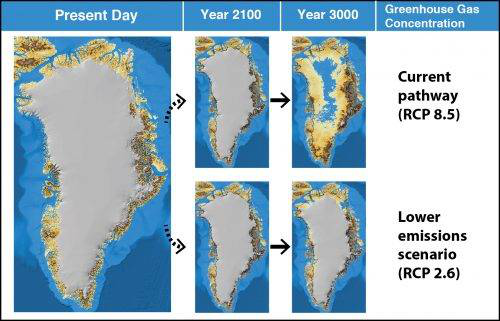
1.What would make the Greenland ice-free?
A The greenhouse gas emission.
B The rising sea level.
C The large number of ice mass.
D The changing scenarios.
解析:选A。细节理解题。根据文章第一段第一句unless greenhouse gas emissions are substantially reduced可以得知温室气体排放会导致格陵兰岛上的冰消失,故选A。
2.The underlined word “disintegrate” in the second paragraph may mean “_______”.
A rise
B collapse
C drown
D retreat
解析:选B。词义猜测题。根据文章第二段第三句Scientists are worried that warming could cause it to collapse可以得知格陵兰岛的冰盖开始“坍塌”,disintegrate与collapse同义,故选B。
3.What will happen if greenhouse gas emissions are reduced sharply?
A Global temperatures will not rise at all.
B Global temperatures will not rise than 2 ℃.
C Global temperatures will get to its peak.
D Global temperatures will drop rapidly.
解析:选B。细节理解题。根据第三段第三句If emissions are reduced drastically, this can be reduced to between 0.3 ℃ and 1.7 ℃.可以得知如果排放急剧减少,气温将升高不超过2℃,故选B。
4.What would happen to Greenland under the worst case scenario?
A It would lose between 8 and 25 percent of its present-day mass.
B It would lose between 26 and 57 percent of its present-day mass.
C Between 72 and 100 percent of its present-day mass would disappear.
D Its present-day mass would not changed rapidly.
解析:选C。细节理解题。根据文章最后一段最后一句Under moderate climate change it would lose between 26 and 57 percent, while under the worst case scenario, between 72 and 100 percent will disappear.可以得知在最坏的情况下,格陵兰岛72%到100%的冰块会消失,故选C。